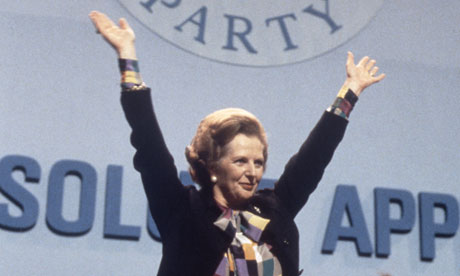Newly released Downing Street documents show Tory cabinet considered compulsory charges for schooling and end to NHS
 |
Margaret Thatcher at the Conservative party conference in 1982.
|
Margaret Thatcher and her chancellor Sir Geoffrey Howe were behind a politically toxic plan in 1982 to dismantle the welfare state, newly released Downing Street documents show. She later attempted to distance herself from the plans after what was described as a “riot” in her cabinet.
The proposals considered by her cabinet included compulsory charges for schooling and a massive scaling back of other public services. “This would of course mean the end of the National Health Service,” declared a confidential cabinet memorandum by the Central Policy Review Staff in September 1982, released by the National Archives on Friday under the 30-year rule.
Nigel Lawson, then the energy secretary, said the report by the official thinktank on long-term public spending options caused “the nearest thing to a cabinet riot in the history of the Thatcher administration“.
In her memoirs, Thatcher said: “I was horrified when I saw this paper. I pointed out that it would almost certainly be leaked and give a totally false impression … It was all a total nonsense,” claiming the proposals were never seriously considered by her or her ministers.
But the 1982 cabinet papers show the politically explosive paper was discussed at a special half-day extended cabinet discussion on 9 September that year. They show that Thatcher and Howe had been encouraging the CPRS thinktank to come up with such long-term radical options since February that year and that Howe continued to defend them even after the cabinet “riot” described by Lawson.